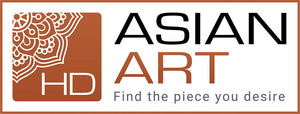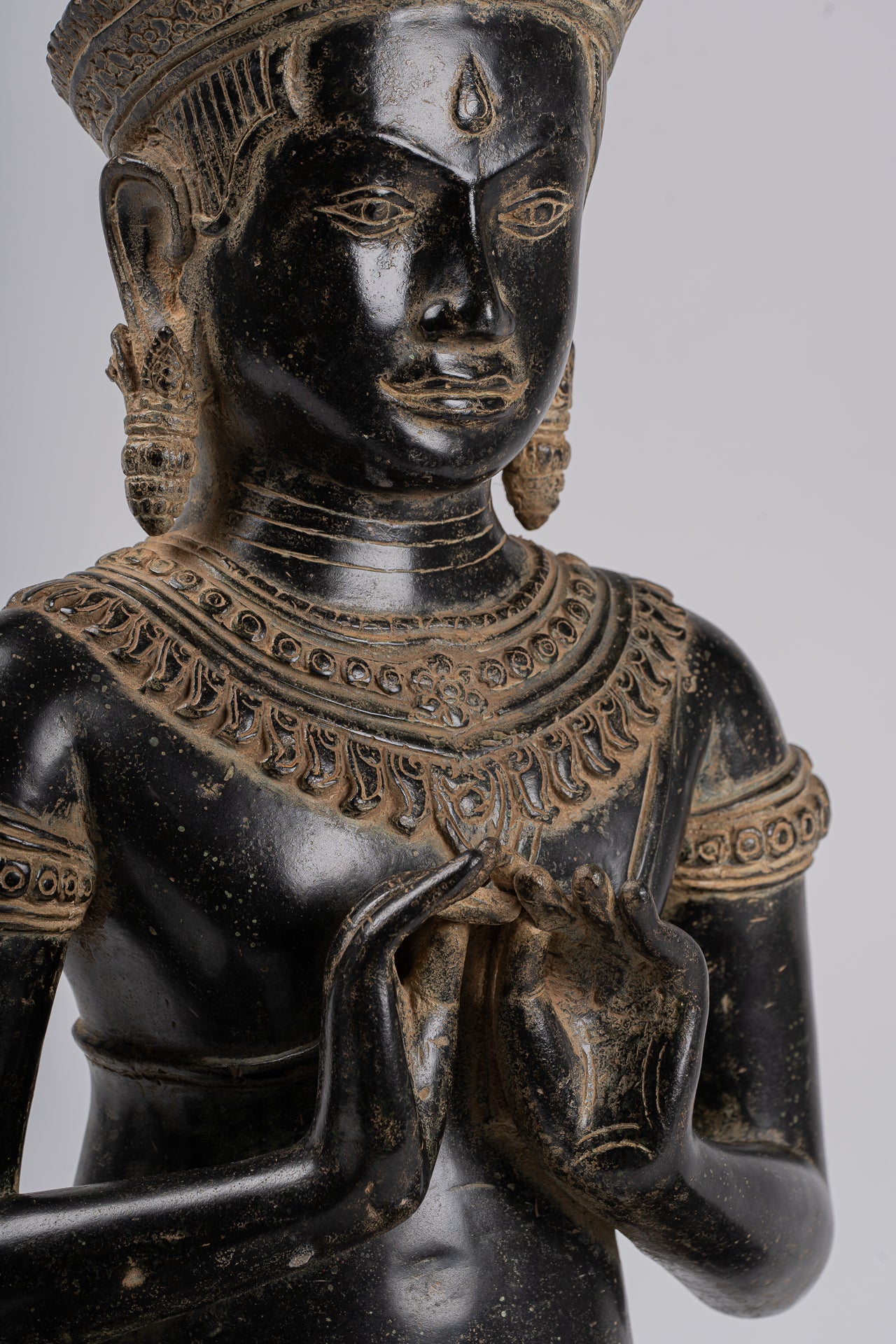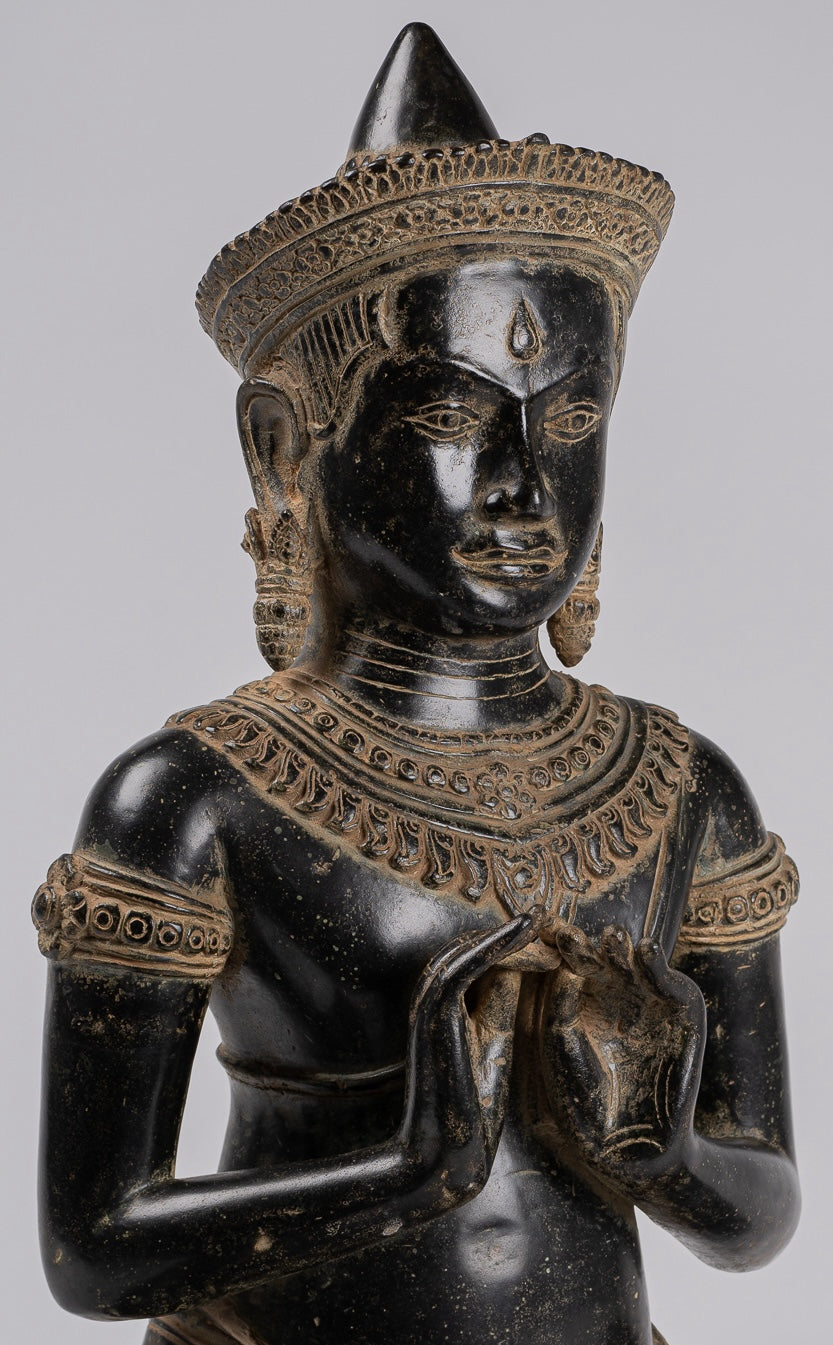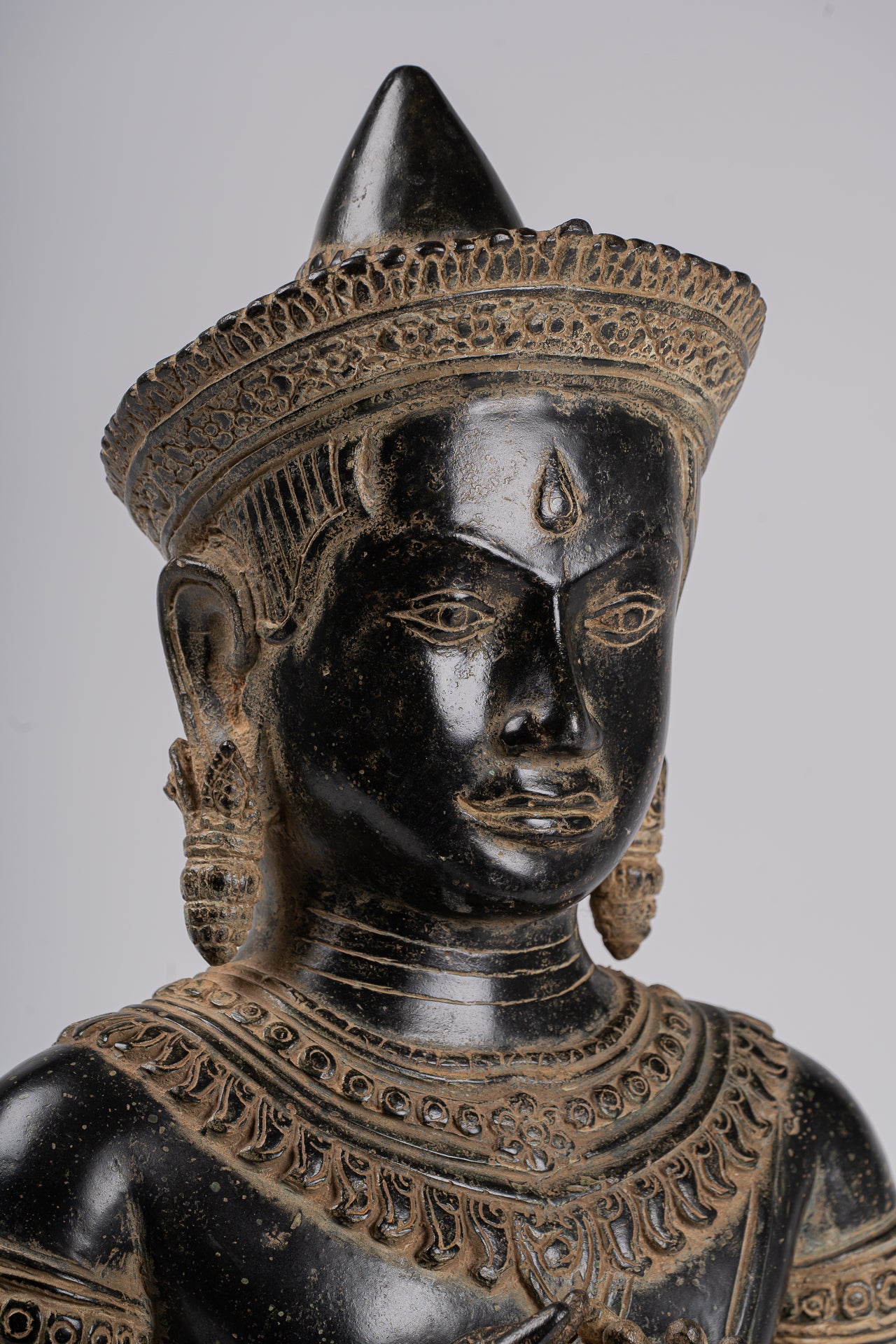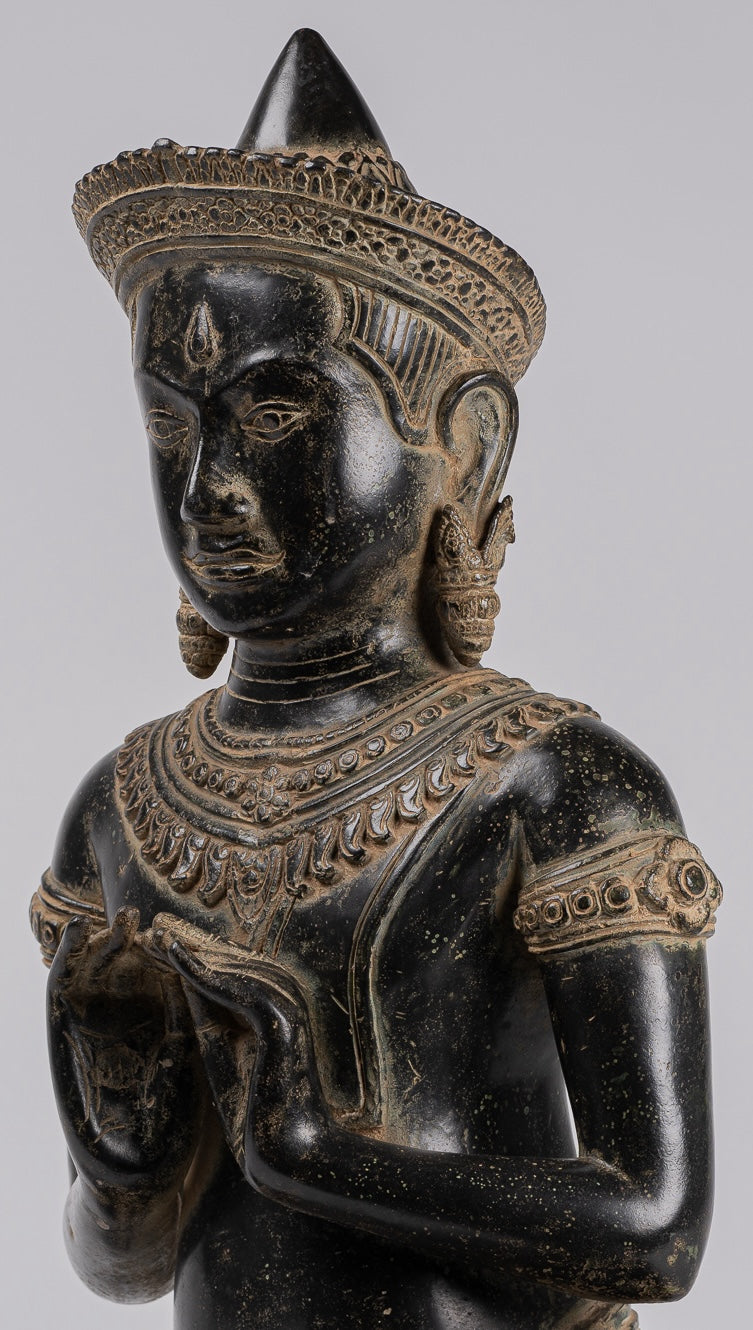-
Buddha - Antique Khmer Style Bronze Seated Double Teaching Buddha Statue - 56cm/22"
Measures (Height) 56cm/22"
A serene antique Khmer style seated bronze Teaching Buddha statue. In typical, post-Angkor 13th century Bayon style the Buddha possesses a serenity, that confirms the divinity of Buddha, whilst lacking all ego.
The Teaching Buddha, also known as the Dharmachakra Mudra, is a central and revered image in Buddhism. This iconic representation of the Buddha carries profound meaning and symbolism within the context of Buddhist philosophy and practice.
The sculpture embodies authority with its heavy silhouette. The features suggest the prana, or inner breath, that signifies superhuman power.
Generally, the sculpture demonstrates a feeling of elegance and softness. The image radiates an aloofness, the quiet power of Buddha and the sensuality typical of the post-Angkor Wat period.
The Buddha is seated in the half lotus position with both hands raised in front of his chest in the dharmachakra mudra. In sanskrit dharmachakra means the 'Wheel of Dharma'. This mudra symbolises one of the most important moments in the life of Buddha, the occasion when he preached to his companions the first sermon after his Enlightenment in the Deer Park at Sarnath. It therefore denotes the setting into motion of the Wheel of the teaching of the Dharma. In this mudra the thumb and index finger touch at their tips to form a circle. This circle represents the Wheel of Dharma, or in metaphysical terms, the union of method and wisdom.
The fullness of the form gives the face a softness which accentuates the almost downcast eyes, and the fleshy and sensual lips. The face shows a strong sense of observation. The inner rims of the ears display the characteristic tripart scalloped treatment. The lobes hang low, stretched from a youth spent as a prince wearing heavy gold earrings. The face is defined by slightly arched eyebrows, full rimmed lips, wide open rimmed eyes and an aquiline nose.
A lotus flower shaped ushnisha can also be seen atop the Buddha's head. This ushnisha symbolizes Buddha's high level of spiritual development.
The lotus flower represents the attaining of enlightenment and the ultimate fulfilment that follows. This symbol is heavily used in Eastern religions, which is why it can appear as both a held item or a seat. Some say that as the lotus flower grows in dirty water but becomes something beautiful, it demonstrates how we must forget our attachments to the material world around us and focus on our inner spirituality in order to seek happiness.
On his forehead he has a third eye or urna symbolizing the ability of Buddha to see past our mundane universe of suffering.
The seated and meditative posture of the Teaching Buddha reflects a state of profound inner peace and enlightenment. It symbolizes the calm and contemplative mind that has transcended suffering and gained wisdom. The crossed legs indicate balance and harmony, signifying the integration of all aspects of life.
The Teaching Buddha's message is one of universal compassion and liberation. The open palm of the right hand signifies an invitation for all beings to come and learn from the Dharma, emphasizing the Buddha's desire to help others escape the cycle of suffering.
The Teaching Buddha, with its iconic gesture of turning the wheel of Dharma, encapsulates the essence of Buddhist philosophy and practice. It represents the Buddha's profound realization of the nature of suffering and his compassionate mission to guide others toward liberation.
The symbolism of this image serves as a source of inspiration and guidance for Buddhist practitioners worldwide, reminding them of the path of wisdom, compassion, and inner transformation that leads to the ultimate goal of enlightenment and liberation from suffering.
The casting is beautiful as you can see in the fine details of the face and torso. Each detail is rendered perfectly. The distinctive patina of the piece is also particularly delightful.
Styled after artistic techniques prevalent in the time of the powerful Khmer Empire of South East Asia. This traditional in appearance piece is sure to add a unique touch to any room of your home or workplace.
SATISFACTION GUARANTEE - We have been offering SE Asian Art for many years and are proud of the reputation we have developed for fair and honest listings. However, if for any reason, whatsoever, you are unhappy with your purchase please just let us know and we will provide a full refund. We want you to be 100% happy with your purchase.
-
The majority of orders will be shipped with DHL. This is a secure, express and fully tracked service.
Items less than 2Kg we typically ship using Royal Mail.
Once we receive your order we try to ship all orders the same or next working day.
Large and/or fragile pieces requiring palletising, specialist crating and/or extra packaging may take a little longer. Palletised shipments will be delivered curbside.
All orders over 35 GBP will be shipped free of charge.

-
We genuinely hope that all purchases delight.
However, if they do not, regardless of reason, we will refund all orders upon receipt of the unwanted item. Just notify us within 14 days of receiving your order that you wish to make a return and send the piece back to us with 30 days of delivery.
Shaivism, with its deep philosophical roots and vibrant devotional traditions, remains a central force in Hinduism.
Whether through mystical meditations, temple worship, or the ascetic life of yogis, followers of Shiva find spiritual fulfillment in his divine presence.
